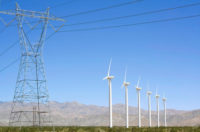As New York intensifies its debate over whether to employ hydraulic fracturing techniques to recover shale-gas deposits in the Marcellus shale formation, Gov. Andrew Cuomo is sticking to his pledge to "let the science and the facts" determine if the state' should lift a two-year moratorium on fracking.
Meanwhile, five months after the state's Dept. of Environmental Conservation (DEC) released revisions to the state's oil and gas drilling regulations, which were in place before the moratorium, the U.S. Geological Survey (USGS) has joined the federal Environmental Protection Agency in raising concerns over gas drilling in the Marcellus shale formation that extends into upstate New York. The DEC predicts that it may receive applications to drill between 1,700 and 2,500 horizontal and vertical wells in the upstate region if the moratorium is lifted. The majority of the wells would be tapped using the techniques of horizontal drilling and hydraulic fracturing, otherwise called fracking.
The USGS, considered an impartial agency, insists it has not taken a position on the DEC's plan. However, the agency's input to the DEC notes plenty of concerns. For example, the USGS and the EPA argue that DEC's 500-ft buffer recommendation when rigs are drilling near aquifers supplying major water systems—including New York City's—is insufficient. The USGS says the chemical-infused liquids that are injected into the ground to crack through the shale and release gas could find their way into the aqueducts that carry drinking water to New York City.
Mark Zoback, a geophysics professor at Stanford University who has studied the Marcellus shale plan, said, "waiting on science" is a stalling technique used to combat political pressure from environmental groups.
"There's no question shale gas can be developed in an environmentally responsible way, and there's no question it can be done now," he said. "You want to make sure you're looking forward at a process of constant improvement, but this can be done, and is being done, safely."





